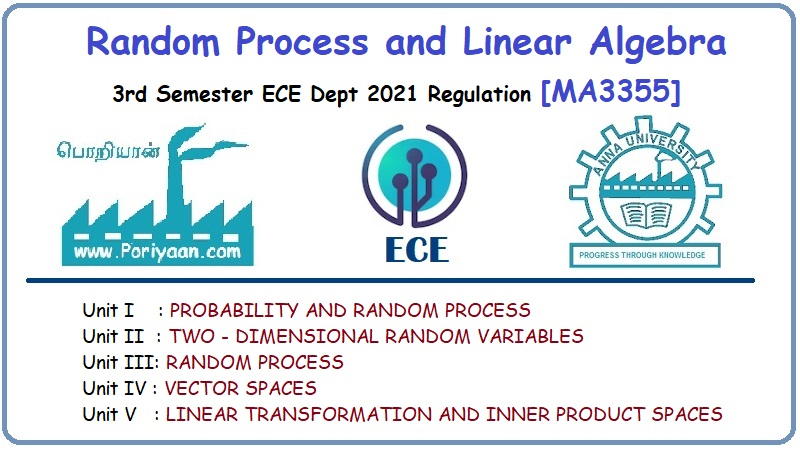Random Process and Linear Algebra: Unit V: Linear Transformation and Inner Product Spaces,,
Linear Transformation
Definition, Properties, Examples of Linear Transformation
Details and examples about Linear Transformation
LINEAR TRANSFORMATION, NULL SPACES, AND RANGES
Definition :
Let V and W be vector spaces (over F). We call a
function T : V → W a linear transformation from V to W if, for all x, y, Є V
and c Є F, we have

Properties of T is
linear
Properties of a function T : V → W.
1. If T is linear, then T(0) = 0.
2. T is linear if and only if T (cx + y) = cT(x) +
T(y) for all x, y Є V and c Є F.
3. If T is linear, then T (x - y) = T(x) - T(y) for
all x, y Є V.
4. T is linear if and only if, for x1, x2,
..., xn Є V and a1, a2, ..., an Є
F, we have

Note: We generally
use property 2 to prove that a given transformation is linear.
Property 1:
If T is a linear, then T(0) = 0
Proof:
Given: T is linear.

where x is an arbitrary element in V.
Property 2.
T is linear if and only if T(cx + y) = c T(x) + T(y)
for all x,y Є V and c Є F.
Proof:
Given: T is linear

Converse part :

To prove T is linear.

Since 0 vector is in the vector space V,
we replace y with the 0 vector.

Property 3.
If T is linear, then T(x - y) = T(x) - T(y) for all
x, y Є V.
Proof :
Given : T is a linear transformation.
To prove :
T(ax + by) = aT(x) + bT(y) for any scalars a,b Є F
and vectors x,y Є V
Since 1 and -1 are scalars, we use a = 1, b = -1 in
the above equation to give

Property 4.
T is linear if and only if, for x1, x2,...,
xn Є V and a1, a2, ..., an Є F, we
have

Proof:
Given: T is a linear transformation.
To prove that

We know that, linear combination of vectors in V is
also a vector in V.

Continuing in the same way by splitting the
additivity, we get

Converse part :

Since 0 vector is in V, we replace a3 = a4
= ... = an = 0 and a1 = a2 = 1, then we are
left with

In other words,  which satisfies the
first part of the definition.
which satisfies the
first part of the definition.
Similarly, Put 
This proves the second part of the definition.
Thus, T is a linear transformation.
Example 1.
For any angle θ, define  by the rule :
by the rule :
Tθ(a1, a2) is the
vector obtained by rotating (a1, a2) counterclockwise by θ
if (a1, a2) ≠ (0, 0), and Tθ(0, 0) = (0, 0).
Then  is a linear transformation that is
called the rotation by θ.
is a linear transformation that is
called the rotation by θ.
Example 2.
Define 
T is called the reflection about the x-axis.
Example 3.
Define 
T is called the projection on the x-axis.
Example 4.
Define  is the transpose of A.
Then T is a linear transformation.
is the transpose of A.
Then T is a linear transformation.
Example 5.
Define  where ƒ'(x) denotes the
derivative of f(x).
where ƒ'(x) denotes the
derivative of f(x).
To show that T is linear, let 
Now

So by property 2, T is linear.
Example 6.
Let V = C(R), the vector space of continuous
real-valued functions on R. Let a, b Є R, a < b.
Define 
Then T is a linear transformation.
Random Process and Linear Algebra: Unit V: Linear Transformation and Inner Product Spaces,, : Tag: : Definition, Properties, Examples of Linear Transformation - Linear Transformation
Related Topics
Related Subjects
Random Process and Linear Algebra
MA3355 - M3 - 3rd Semester - ECE Dept - 2021 Regulation | 3rd Semester ECE Dept 2021 Regulation
